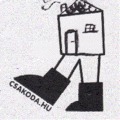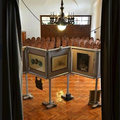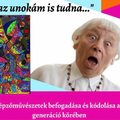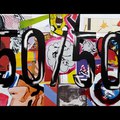Gerber Pál pályája a kései nyolcvanas években, a „gulyáskommunizmus” utolsó időszakában indult. A tatabányai gyermekkor, a munkásváros miliője erős nyomot hagyott a később Budapestre költöző Gerberben. A Kádár-kor ismert és megmosolygott vagy éppen hidegrázást kiváltó szlogenjei, tárgykultúrája, színvilága, ismerős szürkesége, gondolattársításai, tárgyegyüttesei térnek vissza munkáiban. A kilencvenes években az új gazdasági, politikai berendezkedés fordulatot hozott a fiatal festő művészetében is, amely azonban megőrizte alapvető jegyeit, mindenekelőtt a folyamatos párbeszédet a környező világgal, a magas- és a tömegkultúra látható és láthatatlan rétegeivel. Pontosan megfogalmazott motívumaival - legyen az kiemelt szövegrészlet, talált apróhirdetés vagy képi elem – talányos történelmi és kultúrtörténeti utalásokat, váratlan asszociációs kapcsolatokat jelenít meg.
Gerber Pál retrospektív kiállítása a Ludwig Múzeum egyéni életműveket bemutató sorozatának következő állomása. A rendszerváltás évében, 1989-ben megrendezett és azóta legendássá vált Kék Acél című kiállításon bemutatott művektől indulva a kiállítás képzeletbeli ívet ír le, Gerber közel huszonöt éves pályafutását bemutatva. Műfajilag is igen sokoldalú életműről van szó, és ezt a sokrétűséget a kiállítás nem a kézenfekvő kronologikus rendben kívánja bemutatni, hanem az egymás mellé helyezéssel értelmezi a kiállított műveket, dialógust igyekszik létrehozni Gerber munkásságán belül, az egyes művek között is. Bár Gerber munkáit számos kiállításon láthattuk az elmúlt években, ez a sokoldalú párbeszéd eddig nem valósulhatott meg.
A kiállítás alkalmából megjelenő 250 oldalas katalógus a művész életművének mélyebb megismeréséhez és megértéséhez kíván segítséget nyújtani. A katalógus szerzői: Hornyik Sándor, Pataki Gábor, Sturcz János és Tatai Erzsébet. Szerkesztette: Oltai Kata.
Pál Gerber`s career began in the late eighties, during the last period of the so called goulash communism. His childhood years in Tatabánya and the industrial milieu of the city left a strong mark on Gerber, who later moved to Budapest. His works bring back the well-known, smiled upon or rather repulsive slogans, object culture, colour schemes, ever familiar greyness, thought associations and object ensembles of the Kádár era. As a young painter, the new economic and political climate of the nineties elicited a shift in his art, which did, however, retain its fundamental feature - that is, above all, a continuous dialogue with the surrounding world and with the visible and invisible layers of mass culture. With his precisely articulated motifs - be it a highlighted excerpt, a stumbled-upon classified ad or a visual element - he creates unexpected associations and enigmatic references to history and culture.
Pál Gerber`s retrospective exhibition is the next event of the Ludwig Museum series introducing artists` oeuvres. Deriving from the material of the legendary Kék Acél (Blue Steel) exhibition held in the year of the regime-change (1989), Ludwig Museum`s show draws an imaginary arc tracing Gerber`s 25-year-long journey as an artist. This is a varied oeuvre in terms of genres as well. Instead of addressing this diversity through the obvious chronological approach, however, the exhibition uses juxtaposition in its interpretation of the material. Thus it seeks to establish a dialogue both with Gerber`s oeuvre and between the individual works as well. Although the audience may have seen Gerber`s work at a number of exhibitions through the years, such a multifaceted dialogue has not been realised before.
In addition to such new works as the According to Law series (2010), The Truth Sets You Free (2010), and Dust on Modernism (2010), Pál Gerber`s earlier installations will also be featured, including Hope in Skilled Labour (1994), and, exhibited for the first time in Hungary, I Don`t Like Pessimism (1992). His works commenting on the world, the actors, the trends and the operating mechanisms of art (The Weight of Art – Uplifting Art, 2010; Price Pictures, 2008; Creative Artist Hard at Work at Developing His Own Unique Style of Form, 1991/2010), and his more explicitly political and socially critical pieces (Ochre Flag, 2005; Oil Stain, We Are a Small Country, 1992; Living without Self-Critique, 2006/2010) will also be presented. Gerber usually highlights the banal, unarticulated, lurking repressions and bittersweet truths of the everyday world that surrounds us (Woman`s Handbag with a Broken String of Beads, 2003; Gabi's Short Story, 2005/2010; Object Caught on the Chandelier, 1998).
The 280-page catalogue of the exhibition attempts to foster a deeper understanding of the artist’s oeuvre. Authors: Sándor Hornyik, Gábor Pataki, János Sturcz, Erzsébet Tatai. Editor: Kata Oltai. The catalogue is available at the exhibition space.

 A
A 




